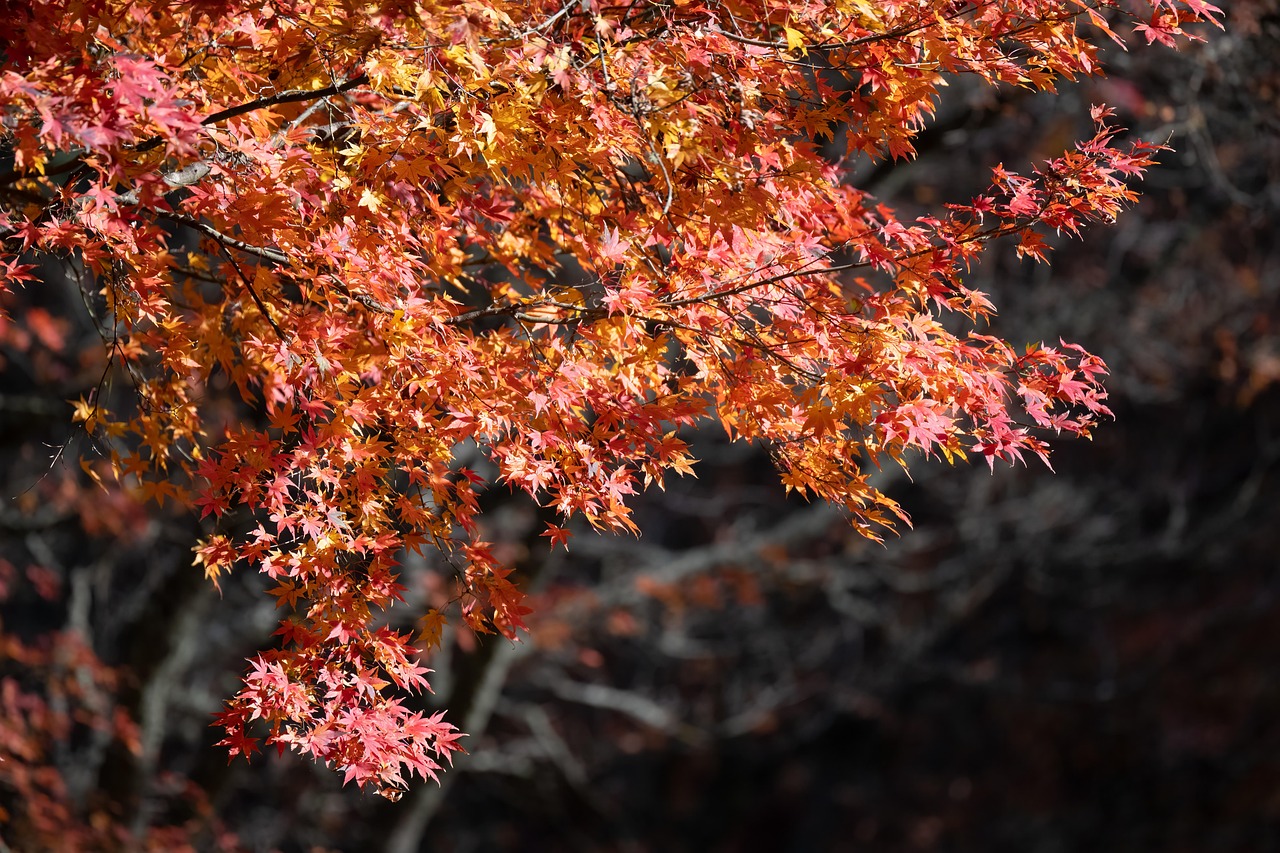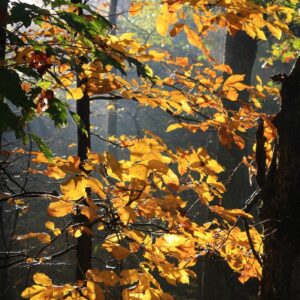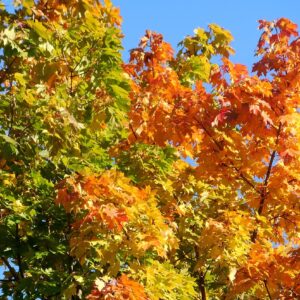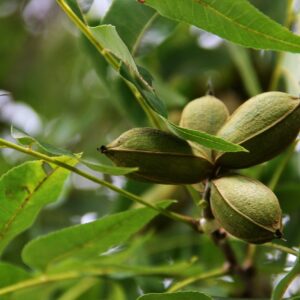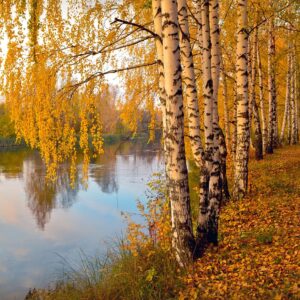The red maple (Acer rubrum) is a deciduous tree native to eastern North America. It is known for its vibrant red color, especially in the fall, when its leaves turn brilliant shades of red, orange, or yellow. Red maples can grow up to 40–60 feet tall and have a relatively fast growth rate. They have a rounded crown with leaves that are typically three to five lobed and have a distinct, serrated edge.
Size and Shape: Red maples typically grow between 40 and 60 feet tall, though they can sometimes reach heights of 90 feet in optimal conditions. Their width is usually between 25 and 40 feet. The tree has a broad, rounded canopy and a fairly straight trunk that can be covered in grayish, smooth bark when the tree is young. As it matures, the bark becomes more furrowed and darkens.
Leaves: Red maple leaves are typically 3–5 inches long with 3 to 5 pointed lobes. The leaf shape is a bit like a mitten, with sharp, serrated edges. They’re dark green in the summer, and in the fall, the leaves turn brilliant red (which gives the tree its name), but they can also be shades of yellow or orange, creating a striking contrast with other fall foliage.
Flowers: Red maples are one of the first trees to bloom in early spring. Their flowers are small and appear before the leaves, usually in March to April. The flowers grow in clusters called panicles, and they have a distinct red or reddish-yellow hue. This early bloom is often one of the first signs of spring in many parts of eastern North America.
Seeds (Samaras): After pollination, red maples produce winged seeds called samaras, which are reddish in color and typically appear in late spring or early summer. These seeds are carried by the wind, which helps the tree spread its progeny across a wide area.
Habitat and Growth
Soil and Water Preferences: Red maples are highly adaptable and can grow in a range of soil types, from acidic to slightly alkaline soils. They are commonly found in wetlands, floodplains, and along streams or rivers, as they prefer moist, well-drained soils. However, they are also tolerant of drier conditions, making them versatile in many ecosystems. Growth Rate: Red maples grow relatively quickly, with mature trees reaching full size in 20 to 30 years. This fast growth, coupled with their tolerance to different soil types and environments, makes them a favorite among landscapers and forest restoration projects.
Environmental Role and Wildlife
Wildlife Support: Red maples play a crucial role in the local ecosystem. Their flowers are an early food source for pollinators like bees and butterflies. The seeds are eaten by birds such as woodpeckers, chickadees, and finches, while the tree’s foliage provides shelter for a variety of animals. Its bark is often a habitat for insects, and its wood is sometimes used by squirrels for nesting.
Shade and Erosion Control: The broad canopy of red maples provides excellent shade in the summer, which can help lower temperatures in urban environments. Additionally, their deep root systems can help stabilize soil and prevent erosion, especially along riverbanks or in flood-prone areas.
Uses of Red Maple
Wood: While not as commercially valuable as sugar maples, the wood of red maples is used for a variety of purposes. It is light and relatively soft, which makes it useful for items like furniture, cabinetry, and plywood. It’s also used for pulp in paper manufacturing.
Landscaping: Due to its fast growth, attractive fall colors, and adaptability, the red maple is commonly used in landscaping and urban tree planting projects. It’s also popular for roadside planting because it can handle varying environmental conditions.
Ecological Restoration: Because of its rapid growth and ability to thrive in diverse conditions, red maples are often used in reforestation and wetland restoration projects. They help establish vegetation in disturbed sites and improve biodiversity by providing early cover for other species.
Climate Adaptation Red maples are incredibly adaptable to different climates. While they naturally thrive in the temperate regions of eastern North America, they can grow in a variety of climates, including areas that experience drought and those with occasional flooding. Their ability to handle both wet and dry conditions makes them especially valuable in regions experiencing erratic weather patterns or transitioning climates.
Fall Foliage Perhaps one of the most well-known characteristics of the red maple is its fall foliage. As the temperatures drop in autumn, the chlorophyll in the leaves breaks down, revealing pigments like anthocyanin, which gives the leaves their red hues. This is especially noticeable in red maples, where the entire canopy can become a vibrant red, a highlight of many North American forests in the fall. Some red maples turn yellow or orange, which can create a beautiful gradient of color across the landscape.
Cultural and Ecological Significance Red maples have cultural and ecological importance in various Native American traditions. In some regions, the sap of the red maple was used for making syrup, though it’s not as sweet or abundant as sugar maple sap. The tree’s vibrant color has made it a symbol of the change of seasons in many areas.
In summary, the red maple is a hardy and adaptable tree, highly valued for its beauty, environmental benefits, and ecological contributions. From its striking fall colors to its role in supporting local wildlife and stabilizing ecosystems, the red maple is a tree that plays an important role in many landscapes across eastern North America.

